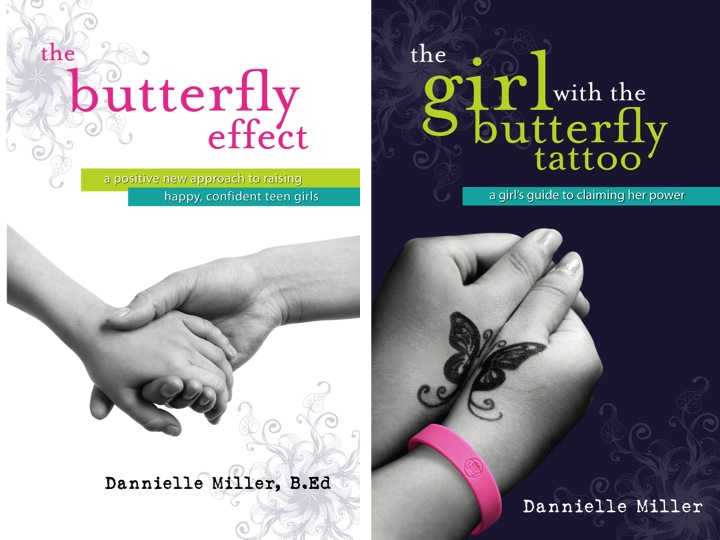I was honoured and thrilled to receive an Australian Leadership Award at the ADC Future Summit. But, oh irony of ironies, one of the lasting impressions I took home from my trip to Melbourne for the summit was just how much work we still need to do to give our girls the opportunity to shine in leadership.
Picture me sitting there with more than 50 business leaders. I looked around, and I realised that I was one of only 5 women in the room. We made up less than 10%. Do women contribute less than 10% to the world’s wealth and wisdom? If that were the case, then I guess a less-than-10% representation in leadership could be expected. But it’s not the case, is it? If any proof were needed, according to APEC, women are vastly underrepresented in leadership positions compared to their contribution to the economy and business, and their level of education.
Some of the barriers to women becoming leaders are tangible, such as inadequate childcare and lost chances for promotion for many women when they take maternity leave. But most of the barriers are culturally embedded, which makes them far more slippery and hard to pin down. Research has shown that in our culture there is a deeply ingrained belief that the qualities of a leader are assertiveness and competitiveness, and that these are male traits, while women are meant to be nice and compassionate. (Why our culture sees being nice and compassionate as at odds with leadership is an interesting question in itself.)
The workplace that today’s girls will inherit is undoubtedly a fairer one compared with previous generations, as there is now legislation to protect them against discrimination and harassment, and to enshrine their right to maternity leave. But you can’t legislate against cultural constructs. In fact, legal and accountancy firms and banks have found a way to get around the legislation so they can keep clinging to a deeply rooted cultural construct: that one of women’s roles in the workplace is to provide “some eye candy for the boys”, as Nina Funnell wrote in the Sydney Morning Herald. (Karen Brooks also wrote a great piece about this, in the Courier-Mail.) The law prevents senior management from telling female employees how they should look, so increasingly, companies are bringing in independent style consultants to tell female employees how they should look. (The men get to stay at their desks and keep working. I guess their wives and girlfriends should sort out their clothing choices for them, right? *Sarcasm alert!*)
In these “training” sessions, what do the stylists suggest women do to be taken seriously in their careers? Keep up with fashion. Wear high heels. Wear conservative makeup — and that means lipstick only, no lip gloss.
Okay, ladies, what are you waiting for? Now you’ve been let in on the secret, get out there and boost those statistics for women in leadership!

I felt like a rebel at the ADC Summit and updated my Facebook status to: “Channelling Nina and Karen today in the fight against the corporate fashion police. Am one of only 5 women in a room of 50+ business leaders. Every one is in black or grey. I’m wearing my uber bright kaftan and have daringly glossed my lips.” How crazy is it that the act of wearing colours and lip gloss can feel like a radical statement for a woman?
All of this got me thinking about the messages we send girls when we criticise their fashion choices or shame them for turning up to school wearing lip gloss. Are we inadvertently reinforcing the sense that it’s okay to judge girls by what they wear rather than what they do?
Corporations bringing in style consultants might be a new phenomenon, but underpinning it is a very old idea: that no matter how accomplished and talented a woman or girl is, she must still fit within a narrow ideal of femininity. For teens, that ideal is expressed in music videos and ads and movies in which being a woman is all about one thing: how hot you are. In the grown-up workplace version, high heels and lipstick maketh the career woman. Hillary Clinton gets picked apart for failing to wear makeup when giving a speech. Julia Gillard’s bottom is a topic of public debate. This policing of appearance is undoubtedly a major barrier to more women taking leadership roles. As one of my Facebook friends commented, “Why would you want to leave yourself open to that?”
The revelations from my time at the summit went beyond fashion. David Moffatt, Chairman of Asurion Australia, gave the opening address, in which he discussed something very laudable: that companies should create flexible, family-friendly workplaces. He talked about his moment of truth, when his son called him at work and said, “Dad, you have been travelling for work half my life. I want you to come home.” His son was then 10 and David had indeed spent the equivalent of 5 years travelling for work. David left the office, went home, played with his son and vowed to back off on the travel. The audience were tremendously supportive and literally sighed at what a great guy he was to have rushed home and slowed down.
And I applaud him for doing it . . . but I also couldn’t help wondering whether a woman would have dared to share a similar story, for fear of being judged a bad mother. Rather than supportive sighs, I imagine she might be met with shocked silence as the audience thought to themselves: “What? She missed half her child’s life?” I turned to the woman next to me, who was looking fondly at David, and asked her what she honestly would have thought if a woman had shared the same story. “Truly? I would have thought, ‘Suck it up, princess, you made your choices!'” she said. She and I both reflected on what a long way we still have to go.
Another moment that got me thinking at the summit came when a social entrepreneur was introduced and at a particular line in his bio — “He also enjoys jumping on the trampoline with his son” — there were very warm smiles from the audience, giggles and looks of admiration. Would a woman leader have dared include this in her bio, for fear of looking frivolous and lightweight? Would the response have been the same? She might have had a tough job convincing the audience that she had a serious message to get across. There is a persistent and infuriating double standard at work: child-rearing isn’t meaningful work — unless it’s done by a man, in which case it’s not only meaningful, it’s beautiful and heroic.
I deeply respect both men for stepping up at home and for sharing their parenting stories in public. I think that if more men did both of those things, we would all benefit — men, women and children. But I question the current mind set in which male business leaders who take an active role in parenting are seen as almost noble, whilst women who try to combine motherhood and business are seen as either unprofessional at work or bad mothers at home.
In the plane on the way back to Sydney, I read in the papers about the virtues of attachment parenting (read: “attachment mothering”) and that studies have shown that children are sad because their parents work too much (given how strongly men have been encouraged to be career focused for generations, read: “mothers work too much”). Yet the surveyed children were simultaneously unwilling to help around the house to maximize the time they had with their parents at home.
Indeed, housework is a domestic battleground at my place. I don’t think my family are by any means unusually uncooperative: I am far from the only woman who walks in exhausted from a business trip to be greeted by mountains of laundry, a messy house and kids with a list of domestic grievances. The reality — and one of the most firmly established barriers to women attaining leadership — is that no matter how much women work outside the home, they are still expected to do the lion’s share of the work at home as well.
How do we get rid of this barrier for women, and for the women our girls will soon become? We chip away it, bit by bit. We try to teach our children, boys and girls, from an early age that there is no such thing as “women’s work” or “men’s work”. We play music and dance to try to make housework fun. We write long, impassioned letters to our kids about the unfairness of expecting their mother, by virtue of being a woman, to do everything around the house. (Okay, maybe it’s just me who does that!) At school, we think twice before saying, “Take this note home to Mum”, and when we notice that the girls are doing all the “housekeeping” type of tasks in a mixed-gender group project, we step in and make the boys responsible, too.

 As we come up to Mother’s Day, I have decided it’s time to celebrate that often dreaded period of motherhood: a daughter’s teen years. If this is the life phase you happen to be in, I’m sure you’ve found yourself in this situation: you’re standing around with other parents at a backyard barbecue and the topic of parenting teen girls comes up. There is some eye-rolling, quite a bit of sighing and a fair dose of judgment. The best you can hope for is to just get through the teen years, just survive them, is what people usually say. You may have even found yourself nodding along in agreement. But this Mother’s Day I want to hit the pause button and inject a new word into that conversation: love.
As we come up to Mother’s Day, I have decided it’s time to celebrate that often dreaded period of motherhood: a daughter’s teen years. If this is the life phase you happen to be in, I’m sure you’ve found yourself in this situation: you’re standing around with other parents at a backyard barbecue and the topic of parenting teen girls comes up. There is some eye-rolling, quite a bit of sighing and a fair dose of judgment. The best you can hope for is to just get through the teen years, just survive them, is what people usually say. You may have even found yourself nodding along in agreement. But this Mother’s Day I want to hit the pause button and inject a new word into that conversation: love.
 Rachel Hansen is the progam manager for Enlighten Education in New Zealand and is an experienced educator who has a first-class honours degree in Psychology and a Masters degree in Criminology from Cambridge University (UK). Rachel is the founder of Good Talks, an organisation that offers sexuality education to schools and parents.
Rachel Hansen is the progam manager for Enlighten Education in New Zealand and is an experienced educator who has a first-class honours degree in Psychology and a Masters degree in Criminology from Cambridge University (UK). Rachel is the founder of Good Talks, an organisation that offers sexuality education to schools and parents.